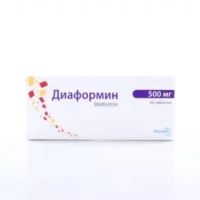Description
Onglyza (Saxagliptin) Coated Tablets 5 mg. №30
Ingredients:
- Each tablet contains 5 mg of saxagliptin.
Dosage:
- The recommended dose is one 5 mg tablet once daily.
Indications:
- Onglyza is indicated as an adjunct to diet and exercise to improve glycemic control in adults with type 2 diabetes mellitus.
Contraindications:
- Do not use Onglyza in patients with a history of a serious hypersensitivity reaction to saxagliptin.
Directions:
- Take Onglyza by mouth with or without food as directed by your doctor, usually once daily.
Scientific Evidence:
Onglyza (saxagliptin) is a dipeptidyl peptidase-4 (DPP-4) inhibitor that works by increasing the levels of incretin hormones in the body, which helps to lower blood sugar levels in patients with type 2 diabetes. Clinical studies have shown that saxagliptin, as monotherapy or in combination with other antidiabetic agents, significantly reduces hemoglobin A1c levels and improves glycemic control.
Additional Information:
- Onglyza has been well-tolerated in clinical trials with a low risk of hypoglycemia. It is important to follow the prescribed dosage and monitor blood sugar levels regularly while taking this medication.
- Research published in the American Journal of Medicine has demonstrated the cardiovascular safety of saxagliptin, providing further support for its use in patients with diabetes at risk for cardiovascular events.





